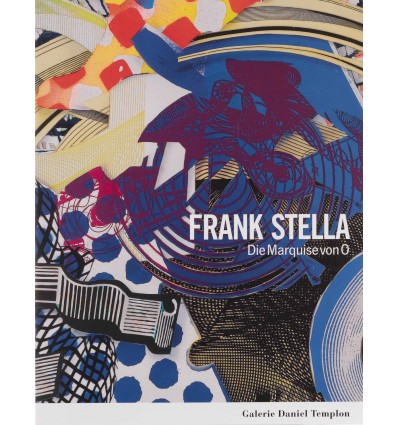No products
Prices are tax included
Product successfully added to your shopping cart
There are 0 items in your cart. There is 1 item in your cart.
Frank Stella - Die Marquise von O
2-916277-01-3
New
Exhibition catalogue, Die Marquise von O, Galerie Templon, Paris (France), 2005
Text by Ann Hindry (English and French)
Editions Galerie Templon, 2005
ISBN 2-916277-01-3
Soft cover, 23 x 29,5 cm
22 pages
More info
Fascinated with German culture and history, Frank Stella grew particularly interested in the work and life of Heinrich Von Kleist, who committed suicide at the age of 34 in 1811. Von Kleist is often described as a solitary genius, a visionary writer, whose stories often shocked his contemporaries. His characters, like the Marquise von O, a young widow who mysteriously finds herself pregnant, are tormented by passion and rebelious aspirations.
This is not the first time Frank Stella uses litterature as an inspiration for his art. From 1986 until 1997 continuing his exploration of volumetric space, Stella created 266 works, at least one for each of the 135 chapters of Herman Melville’s great novel Moby-Dick. Starting in 1998, Stella started the Kleist series which consist of works that range from small crisp wall reliefs named after Kleist’s Love Letters to the massive Prince Frederick of Homburg named for Kleist’s play of that title. All these series consist of metal reliefs, prints, monumental sculptures and murals, which were exhibited in travel museum show in Germany and Singapore from 2001 through 2003.
In Die Marquise von O Frank Stella explores the conflict between reason and passion, tragic fate and cry for joy. Each of the 7 panels is organized around large areas of solid black, around which a collage of baroque shapes in vivid colors form a complex, almost tridimensional, surface. Frank Stella continues his examination of the formal aspects of modernism, focusing his attention on a picture’s surface and structure.
Born in 1936 in Malden, Massachusetts, USA, Frank Stella lives and works in New York. Initially influenced by abstract expressionism, he eventually renounced lyrical abstraction. He was one of the key figures in 1960s minimalist painting, an artist devoted to the relationships between form and colour. Stella was a pioneer of the shaped canvas, whose forms departed from conventional configurations. The three dimensional nature of his paintings led him to begin creating sculptures in the 1980s.
Data sheet
| Artist | Stella, Frank |
| Year | 2005 |
| Editor | Galerie Templon |
| ISBN | 2-916277-01-3 |









